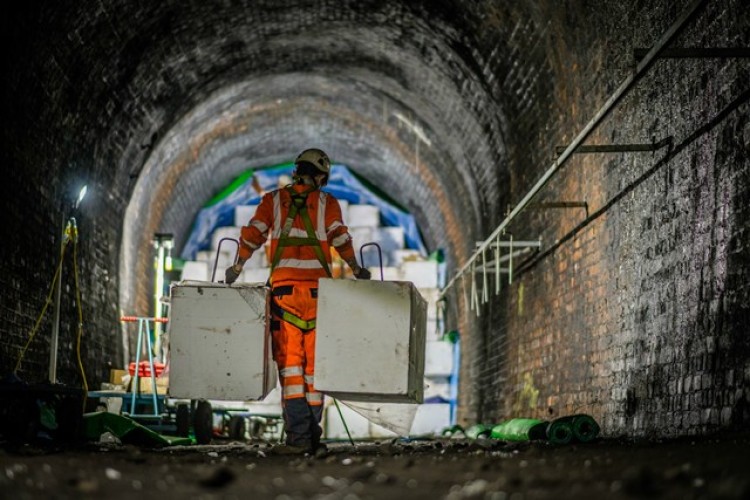The solution was deemed to be low cost, undisruptive and easily reversible.
The structure originally formed part of the Dunfermline to North Queensferry railway line, providing a link to the ferry service until the opening of the Forth Bridge in 1890 and continuing in limited use for freight until 1954.
The tunnel runs underneath the A9000 and B981 on the northern approach to the Forth Road Bridge. It is 420 metres long, 4.3 metres wide and 5.1 metres high, with a vaulted roof and brick lining. Both ends had been sealed off and the adjacent cuttings filled in, so the only remaining means of access was via a vertical shaft at each end.
Engineers found that parts of the tunnel were degrading and in need of maintenance to preserve structural integrity. Due to the limited depth of cover above the tunnel, a failure could have had an impact on the roads overhead.
Amey, the contractor responsible for looking after the Forth bridges, considered two options: an ongoing programme of inspection and maintenance; or a one-off project to infill the tunnel with a low cost material. The infill option was chosen as more cost-effective in the long term.
The expanded polystyrene (EPS) blocks are manufactured to a compressive strength capable of resisting the weight of rock and tunnel lining in the event of a localised failure. Unlike with concrete or aggregate material, EPS blocks can also be easily removed if the tunnel ever needs to be reopened.
.png)
The EPS blocks were cut to a size and weight that allowed easy manual handling on site. This allowed work to be carried out from the access shaft at the north end of the tunnel, keeping construction traffic out of North Queensferry for the majority of the works. Another advantage of the lightweight blocks was that they could be delivered in large lorry-loads, reducing the number of vehicle movements required.
Once offloaded, the blocks were passed down the access shaft and transported along the tunnel by a sliding monorail system.
The tunnel was first lined with a hydrocarbon resistant membrane, before a total of 21,342 EPS blocks were installed, built up in steps to allow safe working at height.
Once the tunnel was full the access shafts were filled with concrete to seal the tunnel and prevent damage to the blocks.
Mark Arndt, Amey’s operating company representative for the Forth Bridges Unit, said: “This has been an unusual and interesting project where we’ve learned something new about the history of the area as well as gaining the satisfaction of making a disused tunnel safe. The team deserves particular credit for developing innovative solutions that maximised workforce safety while minimising the cost to the public purse and the impact on local communities. It’s a real measure of success that most local residents were not even aware this work was taking place, despite the tunnel emerging within metres of homes in North Queensferry.”
Got a story? Email news@theconstructionindex.co.uk



